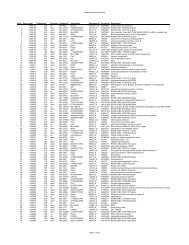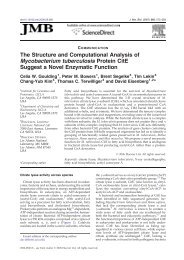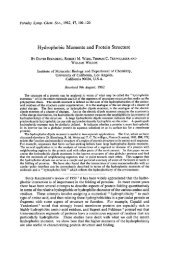Shimming: Theory and Practice - UCLA-DOE
Shimming: Theory and Practice - UCLA-DOE
Shimming: Theory and Practice - UCLA-DOE
You also want an ePaper? Increase the reach of your titles
YUMPU automatically turns print PDFs into web optimized ePapers that Google loves.
Gradient <strong>Shimming</strong><br />
When gradshim is executed, an image (1D or 3D) is taken of the<br />
field using two echo delays (TE 1 <strong>and</strong> TE 2 ) as before.<br />
The image is compared to the field maps, <strong>and</strong> the computer calculates<br />
how best the change the shims to make the field homogeneous.;<br />
Heres how the calculation is done:<br />
Optimal shim settings are calculated by solving the following<br />
least-squares problem using singular value decomposition:<br />
S opt = arg. min. (||A . s – b|| 2 )<br />
where<br />
A = matrix of n column vectors, each one a vector of field changes per<br />
unit shim change for m spatial positions. n is the number of shims.<br />
b = vector of current field values for m spatial elements<br />
s = vector of n starting shim settings<br />
S opt = optimal shim settings











